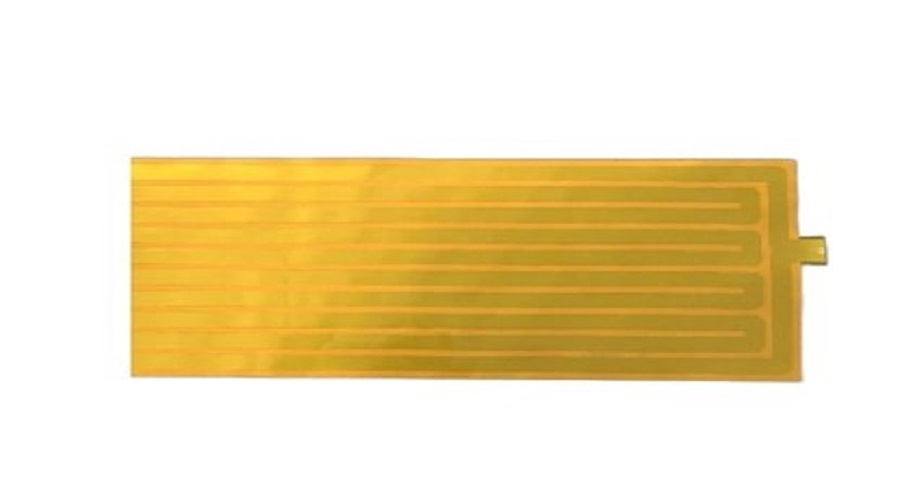A Flexible PCB Heater is a heating element based on flexible printed circuit boards (FPC). It uses a polyimide (PI) or polyester (PET) substrate and forms a metal heating circuit on the FPC through etching or screen printing technology, resulting in efficient and stable electric heating. Compared to traditional rigid heating elements, flexible PCB heaters are lighter, thinner, bendable, and have high temperature uniformity, making them suitable for various applications requiring precise temperature control.

The manufacturing process of flexible PCB heaters is similar to that of ordinary flexible PCBs but differs in conductive materials and thermal management design.
Substrate Selection: Typically uses polyimide (PI) or polyester (PET) as substrates, which have excellent heat resistance, flexibility, and electrical insulation properties.
Heating Circuit Design: Uses materials like copper foil, nickel-chromium alloy (inconel), or constantan to form heating circuits through etching or laser processing, ensuring uniform heat distribution and efficient energy conversion.
Lamination and Bonding: Uses high-temperature and high-pressure processes to firmly bond the conductive heating layer to the flexible substrate, ensuring stability and durability.
Surface Treatment: Use tin plating, gold plating, or anti-oxidation coatings to enhance conductivity and corrosion resistance.
Flexible Reinforcement: Adds reinforcement layers of FR4, PET, or stainless steel to vulnerable areas to increase durability and ease of installation.
Ultra-Thin and Lightweight: Ultra-thin thickness, occupying minimal space, suitable for miniaturized electronic devices.
Flexible and Bendable: Can adapt to complex surfaces, supporting folding and bending installation without affecting heating performance.
Fast and Uniform Heating: Heating circuits are evenly distributed, with high energy conversion efficiency and rapid temperature response.
Precise Temperature Control: Can integrate thermistors (NTC) or PTC sensors for precise temperature control.
High Temperature and Humidity Resistance: Suitable for extreme environments such as aerospace, medical devices, and automotive electronics.
High Reliability: Vibration-resistant, fatigue-resistant with a long lifespan, suitable for dynamic working environments.
Wearable Devices: Used in smartwatches, smart clothing, and sports protective gear for constant temperature heating, enhancing comfort and functionality.
Medical Devices: Applied in patient warming devices, blood analyzers, and miniature diagnostic equipment to ensure stable operation in low-temperature environments.
Automotive Electronics: Used in car seat heating, rearview mirror defogging, and camera defrosting to enhance driving experience and safety.
Industrial Equipment: Used in precision instruments like semiconductor manufacturing, optical instruments, and temperature control devices to ensure stable equipment temperatures.
Aerospace: Used in spacecraft, satellites, and drones for battery insulation and instrument heating, ensuring stable operation in extreme environments.
Consumer Electronics: Used in batteries and screen protective heating of laptops, smartphones, and cameras to improve operating efficiency in low-temperature conditions.
With its lightweight, flexible, uniform heating, and high energy efficiency, the flexible PCB heater shows great potential in many high-tech fields. Whether in wearable technology, medical devices, automotive electronics, aerospace, consumer electronics, or industrial equipment, flexible PCB heaters provide more intelligent, efficient, and reliable heating solutions for modern technological development.
 Advantages and Applications of Polyimide Film Heater
16 Apr 2025
Polyimide film heater is a high-performance electric heating element made by using polyimide film as the outer insulation layer, metal foil or metal wire as the inner conductive heating element, and b...
Advantages and Applications of Polyimide Film Heater
16 Apr 2025
Polyimide film heater is a high-performance electric heating element made by using polyimide film as the outer insulation layer, metal foil or metal wire as the inner conductive heating element, and b...
 Call us on:
Call us on:  Email Us:
Email Us:  No.198 Houxiang Road, Haicang District, Xiamen, China
No.198 Houxiang Road, Haicang District, Xiamen, China